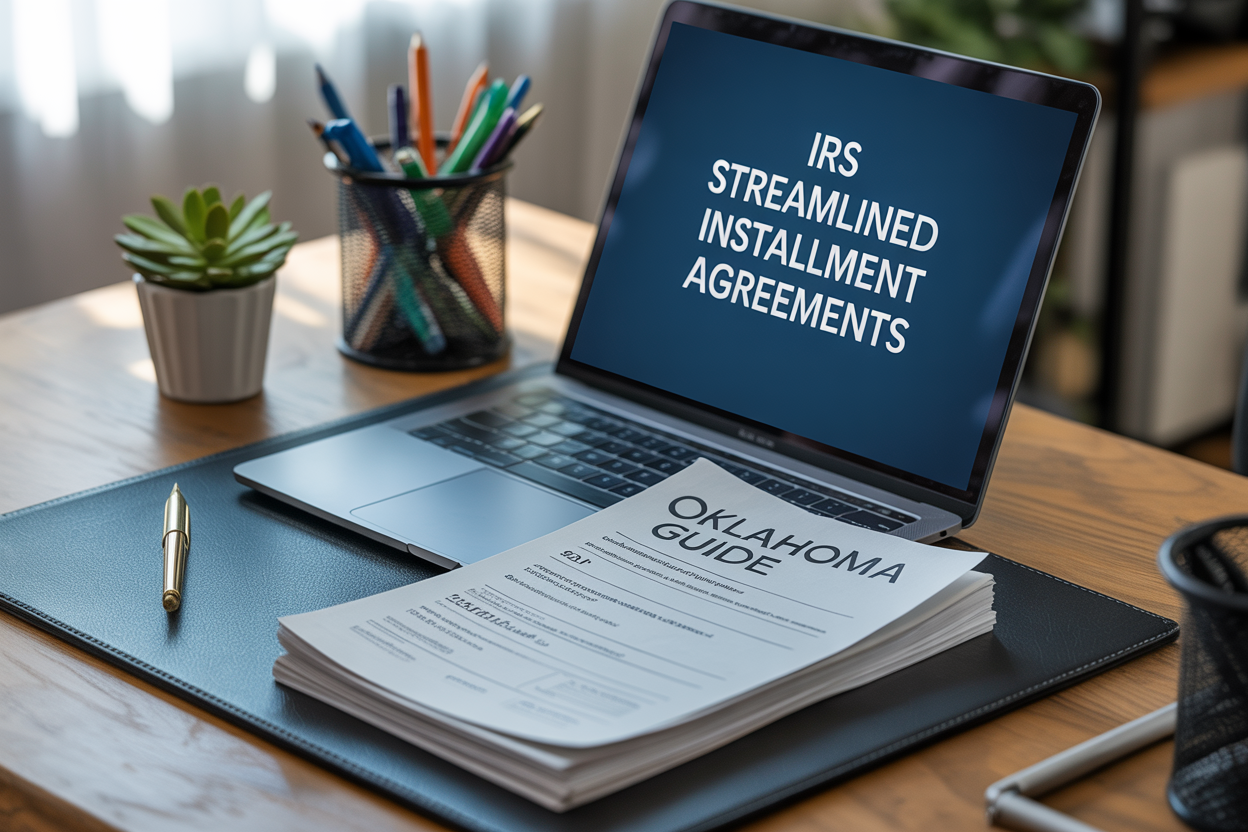How the IRS Calculates Your Offer in Compromise (And What You Can Do to Lower It)

If you owe the IRS back taxes and you can’t afford to pay the full amount, you might qualify for an Offer in Compromise (OIC) — a program that lets you settle your debt for less than what you owe. But how much less?
That’s where the IRS formula for Reasonable Collection Potential (RCP) comes in.
At Boulanger CPA and Consulting PC, we help Oklahoma taxpayers understand how the IRS calculates settlement offers and how to legally reduce that number. Our free IRS Offer in Compromise Calculator can help you estimate your offer amount in minutes.
What Is an Offer in Compromise?
The IRS Offer in Compromise is a formal agreement to settle your tax debt for less than the full balance owed. It’s not a loophole or special deal — it’s based on your actual ability to pay.
You must meet specific criteria:
- All required tax returns filed
- Not in active bankruptcy
- Can demonstrate that full payment would cause financial hardship
The IRS uses a strict formula to calculate your settlement amount based on your income, expenses, and assets.
What Is Reasonable Collection Potential (RCP)?
Your Reasonable Collection Potential is the IRS's estimate of how much it can collect from you over time. This number determines how much you must offer.
RCP = Net Realizable Value of Assets + Future Disposable Income (multiplied by months)
Let's break that down.
1. Net Realizable Value of Assets
This includes:
- Bank accounts
- Vehicles
- Real estate equity
- Retirement accounts
- Other valuables (jewelry, crypto, tools, etc.)
The IRS often discounts asset values, especially if you sell something at a loss or there's a tax consequence.
2. Future Disposable Income
This is your monthly income minus allowable living expenses based on IRS standards:
- Food, clothing, housing
- Transportation
- Medical expenses
- Court-ordered payments
The IRS allows standardized expense amounts based on your county and household size.
How Many Months Does the IRS Multiply?
- 12 months if you plan to pay the settlement in 5 or fewer payments (lump sum)
- 24 months if you propose a payment plan (non-lump sum OIC)
Example:
- $100 in disposable income x 12 = $1,200
- $500 in assets
- Total offer: $1,700 on a $25,000 debt
Use Our Offer in Compromise Calculator
Want to estimate your own offer?
Try our free Offer in Compromise Calculator to see if you may qualify. You can input your income, expenses, and asset values, and it will give you an instant estimate based on IRS standards.
If you want help verifying or improving your numbers, schedule a call. We can usually improve the result by legally optimizing your position.
What You Can Do to Lower Your Offer Amount
The key to a successful OIC is minimizing your RCP while staying in full compliance. Here are some proven strategies:
1. Maximize Allowed Living Expenses
Use the highest allowable expenses under IRS standards for:
- Rent/housing
- Car ownership and operation
- Out-of-pocket medical costs
We use the most generous options allowed for Oklahoma County residents.
2. Avoid Listing Non-Liquid Assets
If something isn’t sellable (used tools, work clothing, old equipment), don’t inflate your asset values. The IRS doesn’t count most personal-use items unless they have clear resale value.
3. Protect Retirement Accounts
Don't liquidate your retirement to pay the IRS. The IRS may consider it an asset, but you often don’t need to include the full amount in your offer calculation.
4. Time It Right
If your income recently dropped or you just separated from a spouse, you may want to wait to file until your financial picture reflects reality. We help you time the application to improve your odds.
5. Settle State Debt Separately
You can settle with the IRS even if you still owe the Oklahoma Tax Commission — but we may need to handle the OTC debt separately.
What Happens After You Submit the Offer?
- The IRS pauses most collection efforts
- Your case is assigned to an Offer Examiner
- They verify your 433-A (OIC) form and request documents
- If accepted, you pay the agreed amount
- If rejected, you can appeal or pivot to an installment plan or hardship status
Processing time: 6 to 12 months on average
Who Shouldn’t File an Offer in Compromise?
You may not qualify if:
- You have high income and equity
- You haven’t filed all required tax returns
- You can afford an installment agreement
- You’re in open bankruptcy
We help Oklahoma clients evaluate whether it’s worth filing before wasting time or money.
Real Client Example
Client: Freelance web developer in Oklahoma City
- Owed $47,000 from 2017–2021
- Had no equity, no retirement, and earned ~$2,200/month
- We calculated an OIC of $1,500
- IRS accepted $1,620
- Debt erased in full
Why Work With a CPA on Your Offer in Compromise?
Many taxpayers try to DIY the OIC and get denied due to mistakes or missing documents.
With Boulanger CPA:
- You get local, licensed CPA representation
- We file your 433-A (OIC), build your financials, and deal with the IRS
- We work with the Offer Examiner directly and correct errors early
- We offer flat-fee pricing, not commission-based gimmicks
Get Help Now
Think you might qualify? Let’s find out together.
Use our free IRS Offer in Compromise Calculator to get started, or call our office to schedule a confidential evaluation.
🧠 FAQ – IRS Offer in Compromise Calculation
What is Reasonable Collection Potential (RCP)?
RCP is the IRS’s formula to calculate your ability to pay. It includes your assets and future disposable income over 12 or 24 months.
Can I really settle for pennies on the dollar?
Sometimes — if your financial profile supports it. The IRS only accepts offers when your RCP is significantly lower than your tax debt.
Do I have to sell assets to qualify for an Offer in Compromise?
No. You do not have to liquidate assets to qualify, but the IRS will include certain equity in their calculations.
How can I lower my Offer in Compromise amount?
By maximizing allowable expenses, timing the application well, and protecting retirement accounts. A CPA can help you legally optimize your financials.
✍️ About the Author
Marc Boulanger, CPA, is the founder of Boulanger CPA and Consulting PC, a CPA firm based in Oklahoma City, OK.
Marc is the author of Oklahoma Taxpayers' Guide: Taking a Stand Against the IRS and has resolved hundreds of complex federal and state tax cases.
With over a decade of experience in IRS and OTC representation, Marc helps Oklahomans navigate high-stakes tax problems with clear strategy and calm expertise.
He is a Certified Tax Representation Consultant and a member of the American Society of Tax Problem Solvers (ASTPS).
📍 Office: Oklahoma City, OK | 📞 (405) 384-4900 | 🌐 www.oklahomacity.cpa










